Houseplants are a great way to improve air quality and add a natural aesthetic to your living space. While a green thumb may be required to care for most indoor plants, many choices are extremely easy to maintain. When given ample sunlight, these low-maintenance houseplants will thrive in direct sunlight.
1. Jade Plant

Like other indoor succulents, jade plants need 4-6 hours of sunlight each day.
©Olga Miltsova/Shutterstock.com
The first houseplant on our list is none other than the jade plant. The scientific name for this succulent is Crassula ovata. When cared for properly, the jade plant can grow up to six feet tall. This resilient species has a lifespan of up to 70 years and is native to South Africa and Mozambique. Caring for the jade plant has never been easier. All you have to do is set it by the windowsill and your houseplant will thrive. Jade plants love tons of sunlight and don’t need a lot of water, so it’s generally recommended to water it once every two weeks. However, their growth is stymied in high-humidity environments, so make sure to avoid placing them in the kitchen or bathroom. If given direct and adequate sunlight, the jade plant sprouts gorgeous pink or white flowers.
2. Snake Plant
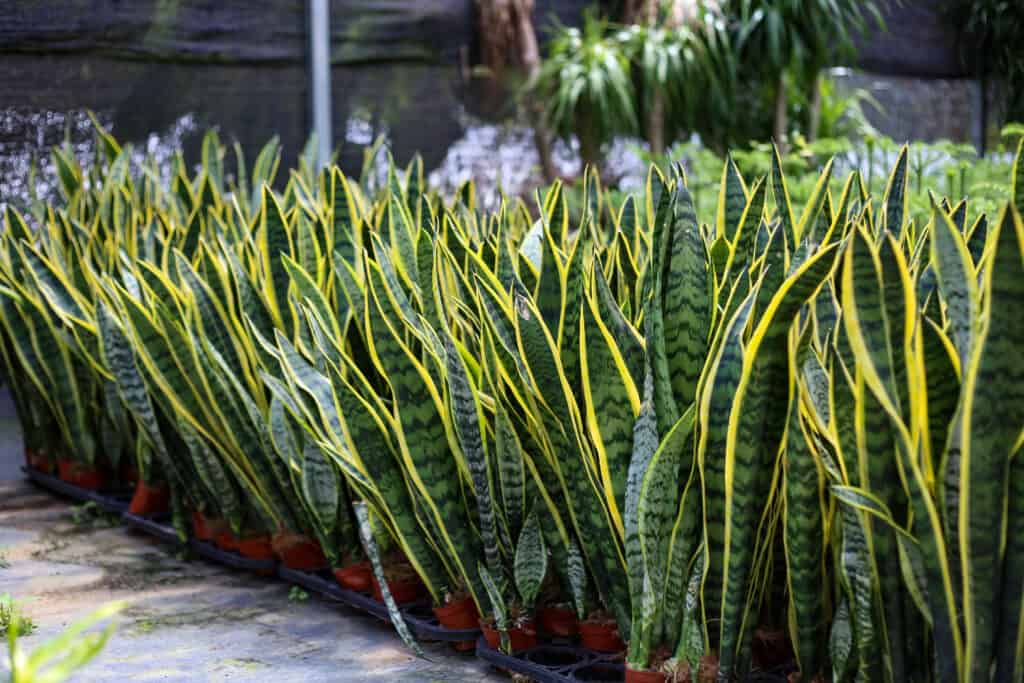
Snake plants grow vertically, so make sure you place them in an area that’s tall enough to contain them.
©iStock.com/Joimi Joh Abi
The snake plant is a perfect choice for beginners and those who lack a green thumb. Its scientific name is Dracaena trifasciata and belongs to the Asparagaceae family. Thanks to its origins in Nigeria, snake plants adapted to survive in sunny, dry environments and require minimal watering. Known as the “Mother-in-law’s Tongue” for its resilience, it can grow up to 10 feet tall in the proper conditions. Snake plants are especially unique because they are a houseplant that thrives in direct sunlight both indoors and outdoors. They tend to excel in direct sunlight and should rest in the same spot, to prevent shocking the plant. Patience is required with these snake plants, as they tend to grow at a very slow rate. They act as natural filtration systems and remove toxins and pollutants from the air while releasing oxygen at night.
3. Zanzibar Gem
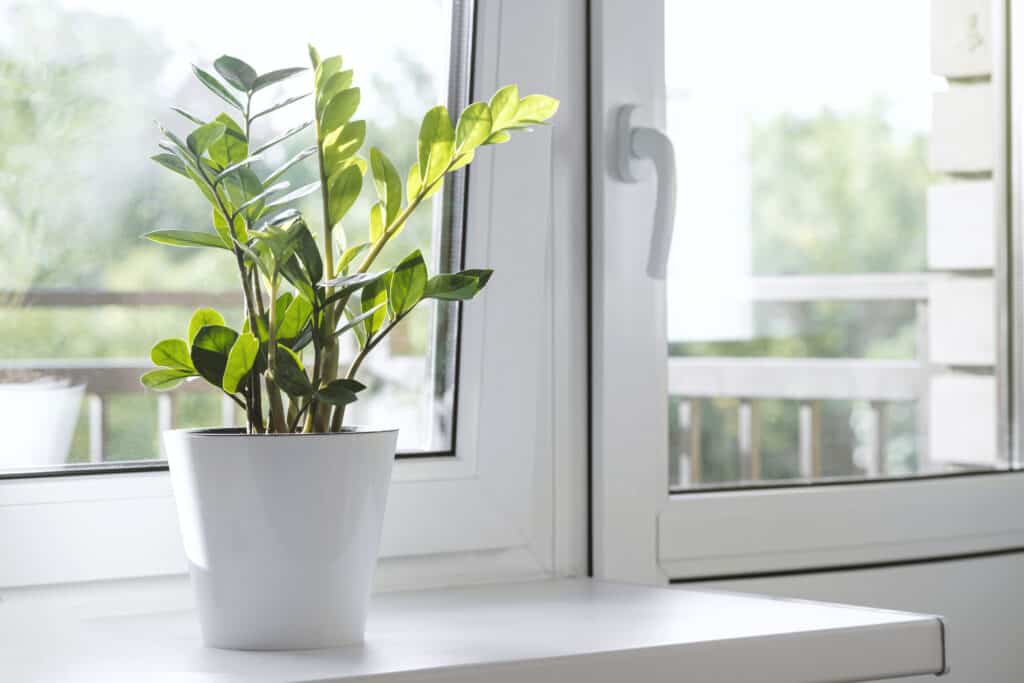
The Zanzibar Gem loves direct sunlight and can grow up to six feet tall.
©iStock.com/Kseniia Soloveva
ZZ plants are rapid growers, so be sure that you plant them in an adequate-sized pot.
This low-maintenance plant is native to East Africa, specifically Zanzibar and Tanzania. Its scientific name is Zamioculcas zamiifolia, which is why it’s commonly referred to as the ZZ plant. One of the main benefits of the Zanzibar gem is that it grows very quickly in a range of lighting conditions. While it’s not recommended to leave them by the windowsill, the Zanzibar gem requires a sufficient amount of direct sunlight. Choose a sunny spot for these plants and water them once every two weeks to ensure sustainable growth. The ZZ plant is, however, toxic to both humans and animals, so be especially careful when repotting or coming in contact with its leaves.
4. Aloe Vera

This houseplant is great for skincare, due to its anti-inflammatory and anti-bacterial healing properties.
©iStock.com/cgdeaw
Aloe Vera is a type of succulent that loves living in direct sunlight. With origins from the Arabian Peninsula and southern Africa, aloe vera is comfortable living in dry, arid environments. This plant’s scientific name is Aloe barbadensis miller. The biggest benefit of this species is its medicinal properties. Cut off a fleshy leaf and apply the aloe topically to treat sunburns and rashes. You’ll need to find a very sunny spot for this plant, which can also thrive outdoors if needed. Even though it can tolerate infrequent watering, it grows best when watered weekly, in drainable soil. Wait until the soil has fully dried before replenishing the plant, or you may risk root rot.
5. Spider Plant
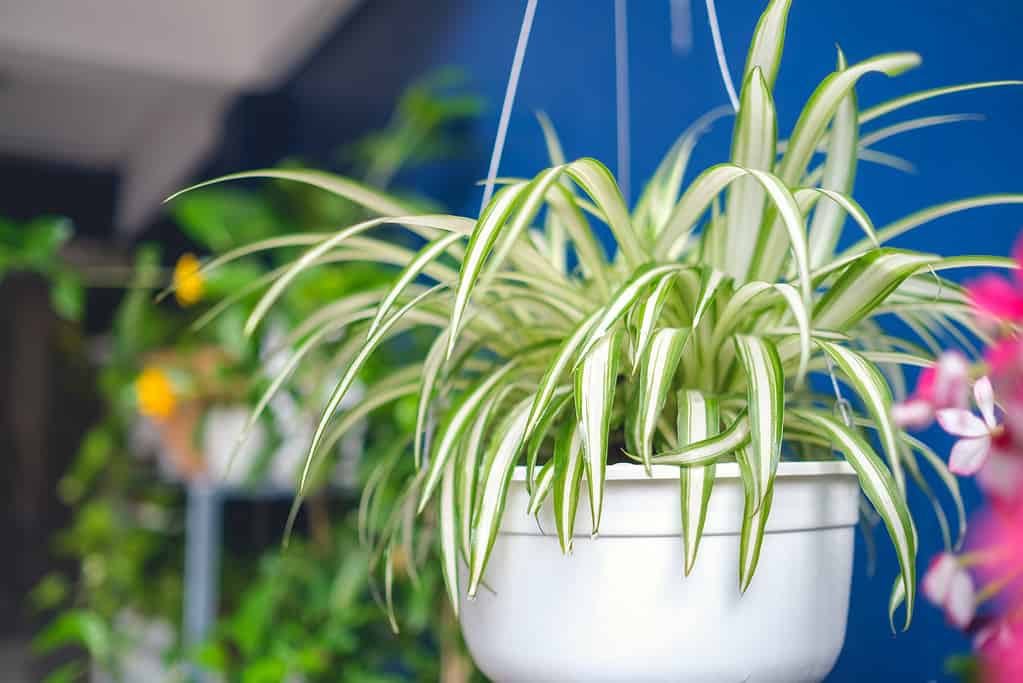
Spider plants are great purifying houseplants that can hang from the ceiling or rest in a large pot.
©yaoinlove/ via Getty Images
The spider plant earns its name for its ribboned, spider-like leaves that flourish in an abundance of sunlight. Its scientific name is Chlorophytum comosum and has origins from coastal areas of South Africa.
This unique-looking houseplant craves a whopping eight hours of sunlight each day. For best results, ensure that your plant is getting as much direct light as possible. When cared for properly, spider plants can live for over 20 years. They can also grow up to two feet tall when stored in a low-humidity environment with temperatures above 70 degrees.
6. Yucca Plant
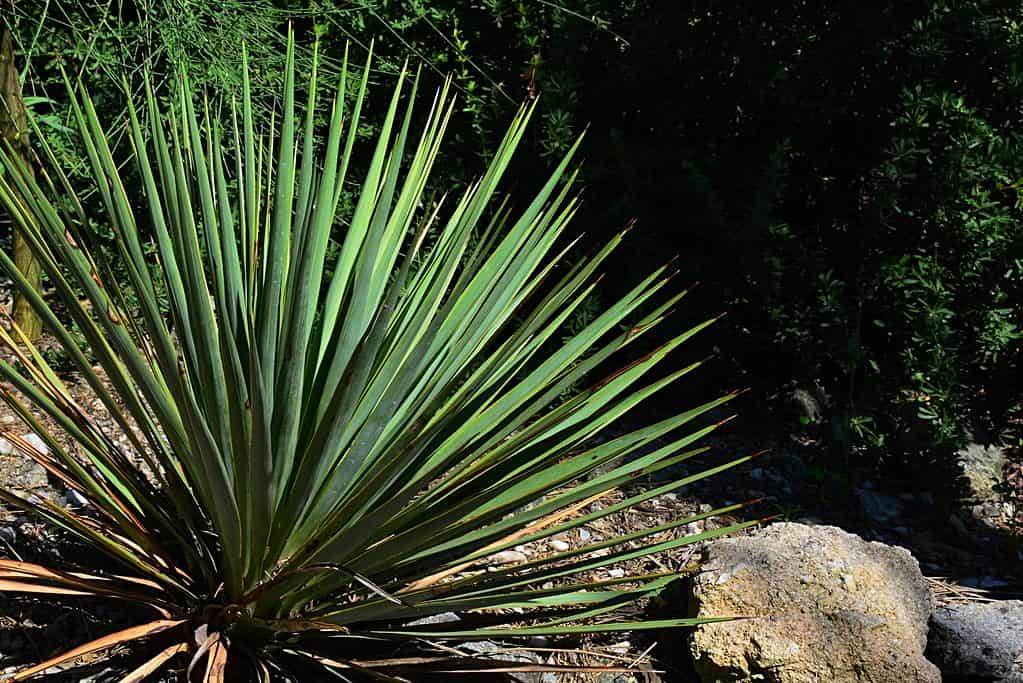
©ZayacSK/Shutterstock.com
Yucca plants typically grow outdoors but thrive indoors with ample direct sunlight.
Also known as the Spanish dagger or Spanish bayonet, the yucca plant is as low-maintenance a houseplant as it comes. This drought-tolerant species has a reduced lifespan when grown indoors, but can still survive for over five years if cared for properly. Its scientific name is Yucca gigantea and is native to Central America and southern Mexico. There are over 50 different types of yucca plants, but the one commonly found in homes can grow up to five feet tall. The best conditions for maximum growth are bright, low-humidity environments that receive plenty of direct sunlight. Yuccas are extremely sensitive to overwatering, so be sure that your plant never sits in a tray of water.
7. Croton Plant

The colorful leaves of a croton plant grow best in full sun.
©Khairil Azhar Junos/Shutterstock.com
Croton plants are a bit trickier to look after but can reach up to 20 feet tall when handled properly. Native to Malaysia, this plant’s scientific name is Codiaeum variegatum. Crotons are famous for their colorful, glossy leaves that spread far and wide in direct sunlight. Unlike many other houseplants on this list, crotons prefer full sunlight. It’s best to leave them near a south-facing window, where the plant can soak up as many rays of sunlight as possible. Since they absorb so much light, be sure to keep the soil moist daily. Croton plants produce sap that irritates the skin, so they are considered poisonous and should be stored away from pets.
8. Papyrus
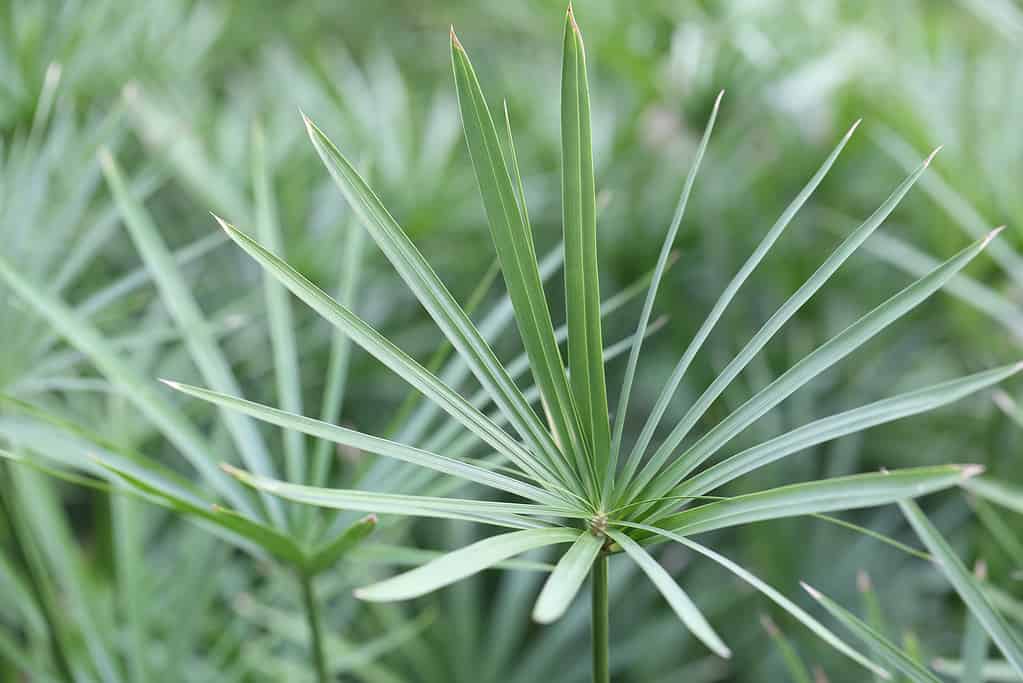
©Living Room/Shutterstock.com
Papyrus plants are native to Egypt and northern Africa and require tons of water and direct sunlight to reach their maximum height.
The papyrus plant is a slightly challenging option that depends on a healthy dose of direct sunlight. Since it originated from the marshy riverbeds of the Nile, it thrives in a wet and sunny environment. Its scientific name is Cyperus papyrus and can grow up to eight feet tall. These houseplants require full sun and fertile soil to reach their full potential. You might need a green thumb to keep your papyrus happy, as they must be watered daily. Not everything is difficult with papyrus plants, as they can survive in both low and high-moisture environments.
The photo featured at the top of this post is © Nataliia Tymofieieva/ via Getty Images
Thank you for reading! Have some feedback for us? Contact the AZ Animals editorial team.







